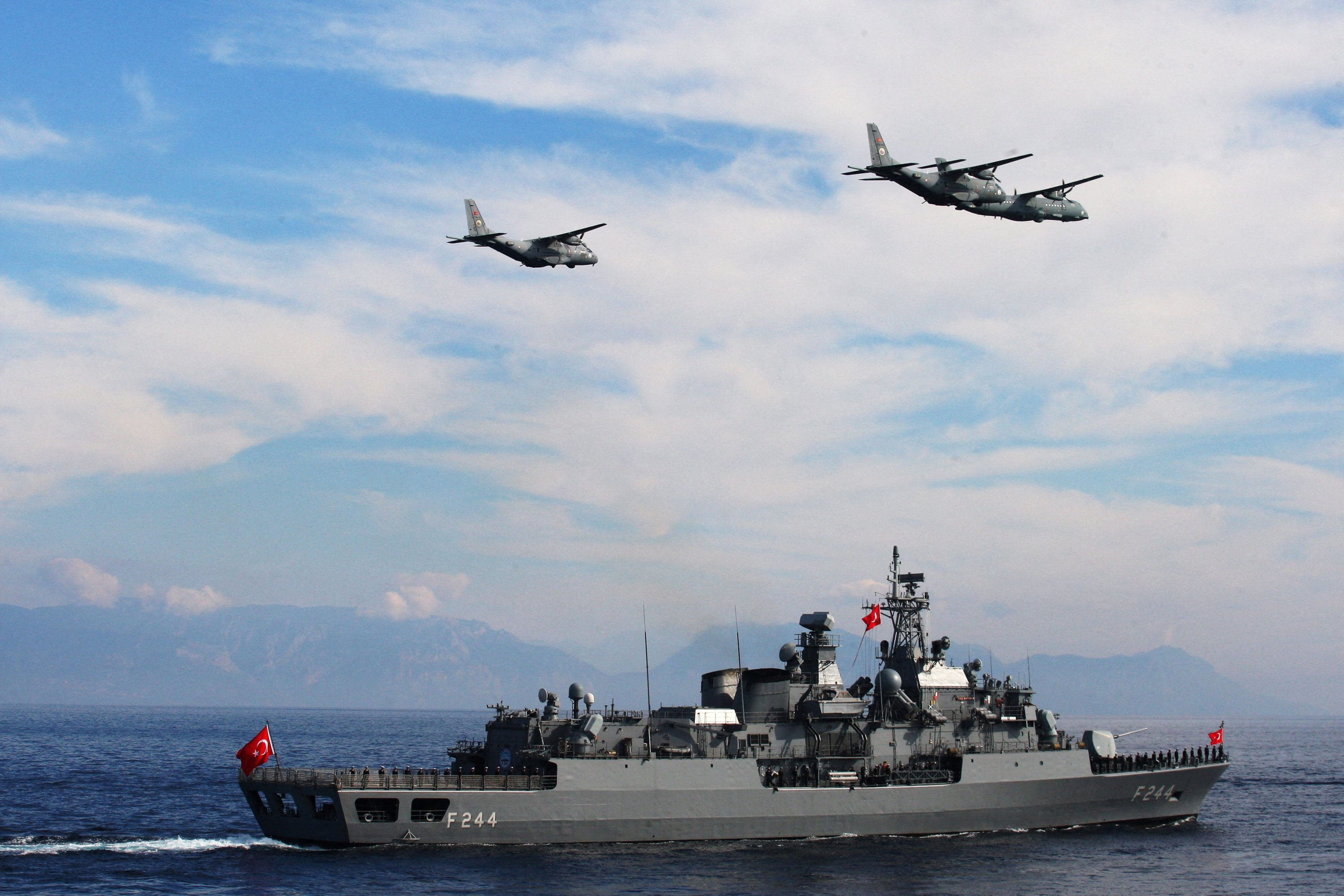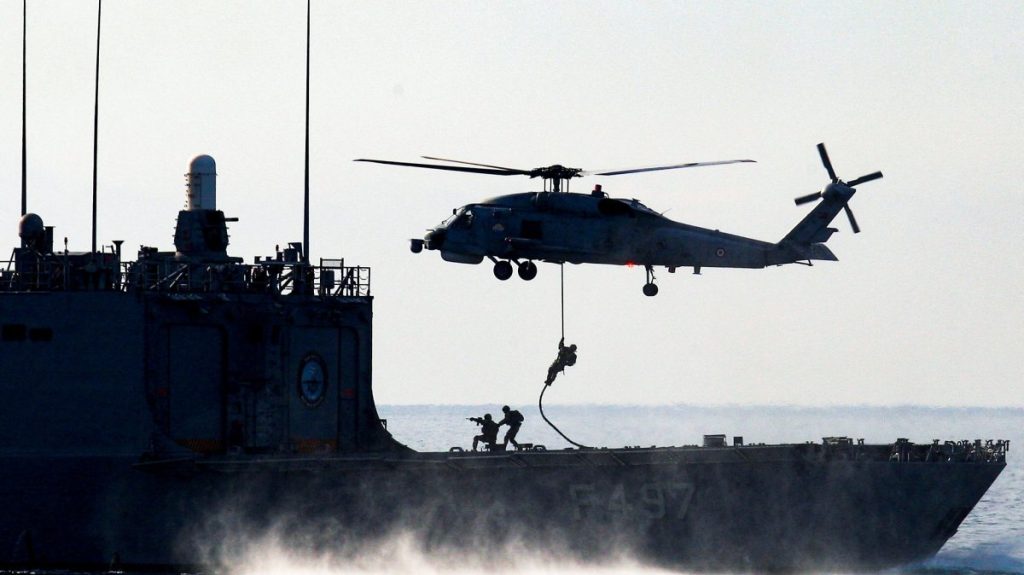The Turkish naval forces have recently entered an important modernization process with the increasing capabilities of the Turkish defense industry. With these activities, which are also referred to as “Blue Homeland Modernization” by those involved, the “Power Transfer Capability” of the Turkish Armed Forces (TSK) will be subject to a significant increase.
Currently, 31 different platforms, including destroyers, frigates, corvettes, fast patrol boats, offshore patrol vessels, submarines, mine search vessels and landing ships, are being built in Türkiye. Most recently, it was announced that the National Aircraft Carrier (MUGEM) construction has officially started. When MUGEM is completed, Türkiye will have an aircraft carrier for the first time.
Currently, the Turkish navy’s largest naval platform is the TCG Anadolu multi-purpose amphibious assault ship (LHD), which was built jointly with Spain and commissioned in 2023. The TCG Anadolu was recently landed on and used to take off by the Bayraktar TB3 armed unmanned aerial vehicle developed by Baykar. This has made it the “world’s first UCAV ship.” On the other hand, “naval versions” of the Kızılelma and Anka-3 platforms will be developed for MUGEM. In short, Türkiye is integrating unmanned aerial vehicle technology, which has made history on land and in the air, into the naval battlefield.
This emerging capability is also reflected in Türkiye’s warship exports. Türkiye is building military naval platforms for many countries, including four Milgem corvettes for Pakistan, two Milgem corvettes for Ukraine, three Milgem corvettes for Malaysia, two logistics support vessels for Portugal, two offshore patrol vessels for Nigeria and two fast patrol boats for Qatar. There are also new and large-scale demands from the Gulf region.
The platforms and the weapon and sensor systems to be used on the platforms are being developed within the Turkish defense industry. ATMACA anti-ship missiles, Çakır cruise missiles, the Midlas vertical launch system, the HİSAR-D air defense missile, the CENK AESA search radar, the Gökdeniz close-in weapon system (CIWS), the 76 mm naval gun, the ARES-2 electronic warfare suite and AKYA heavy class torpedos are some of the payloads Türkiye has developed for naval platforms in the last few years. In fact, the world public is now aware that Türkiye has an alternative to Europe, the U.S., Russia and China in advanced defense industry product procurement.
In this way, Türkiye continues its activities in full on the “Blue Homeland Strategy.” Türkiye’s activation of its naval base in Qatar and the deployment of a naval task force in Somalia are part of its goal to increase not only its interest but also its influence on a global scale.

President Recep Tayyip Erdoğan recently announced that Türkiye’s missile range has increased to 800 kilometers (497 miles) and that missiles with a range of 2,000 kilometers will be developed very soon. Again, this is a message to Greece and the world community. Since World War I, Türkiye has been in a military rivalry with its neighbor Greece, with which it has always had tense relations. Even during the procurement of weapons from abroad, they have tried to balance their relations between Türkiye and Greece. However, with the Turkish defense industry products that have entered the inventory of the TSK in the last 10 years, the rivalry has become irrelevant. Today, missiles with a range of 800 kilometers in the inventory of the TSK have the capability to strike any point in Greece. Therefore, Türkiye can no longer limit its sphere of influence to regional countries such as Greece but can act within the global range because Greece is no longer a primary threat to Türkiye.
Perhaps we can better understand how strategic a concept and policy “Blue Homeland” is for Türkiye through the example of Libya. The equation in Libya, which had reached a deadlock after the coup process, changed 180 degrees with Türkiye’s involvement. Thanks to Turkish warships forming an air defense shield for the Government of National Unity (GNU) forces from the sea, the deployment of Turkish UCAVs to the region and the military consultancy provided to the GNU forces by the experienced personnel of the Turkish Armed Forces, today we cannot talk about the dominance of Khalifa Haftar’s forces in Libya. We can say that this is an outcome of “being strong on the ground.” To be strong in the field, it is necessary to have warships, missile systems and many other defense industry products. The most important thing is to train military personnel to use those sophisticated weapons.
The year 2030 is considered a critical date for the Turkish navy. This is because by then, the Turkish mavy will have eight Mılgem ISTIF class frigates, 10 HISAR class offshore patrol vessels, six Reis class submarines, mechanized landing platforms, fast patrol boats and some support vessels in its inventory. Many sophisticated naval platforms, weapons and sensor systems will also be used. When the first phase of the Blue Homeland Modernization is completed, the Turkish navy will be home to one of the largest navies not only in the Black Sea, Mediterranean and Aegean but also in the world.


